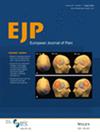Performance-Related Pain Among Professional Orchestra Musicians—The First Portuguese Nationwide Study (POMPS)
Abstract
Background
Pain is a major health problem among musicians. However, data concerning pain in a nationwide perspective are scarce, particularly among Portuguese musicians. Therefore, we aim to evaluate performance-related pain among professional orchestra musicians throughout a nationwide characterisation of all Portuguese orchestras.
Methods
We performed a multicenter cross-sectional study involving all Portuguese professional orchestras, which included 432 musicians (response rate of 72.1%). The main outcome was performance-related pain (evaluated by the Performance-related Pain among Musicians Questionnaire—PPAM). The secondary outcomes were: pain approach, physical activity levels, fatigue, distress, perfectionism, and health-related quality of life. We calculated the prevalence of PRP and performed a descriptive analysis of the main characteristics of our sample (distinguishing musicians with and without PRP) and of PRP, fatigue, distress, perfectionism, and health-related quality of life among musicians with pain, comparing full-time and partial-time musicians.
Results
The lifetime and point prevalence of performance-related pain were 71.8% and 33.3%, respectively. Pain intensity score was 14.9 (out of 40), pain interference in general activities was 21.8 (out of 70) and pain interference in performance was even higher (28.3 out of 50). Pain intensity and interference, fatigue, and perfectionism were higher, and quality of life was lower among full-time musicians. Pain was significantly more prevalent among full-time musicians, string instrumentalists, older and more sedentary musicians, with longer careers, and those who play more hours per week. Multivariate logistic regression defined a model containing five factors significantly associated with higher probability of performance-related pain.
Conclusions
We highlight the high prevalence of pain and the significant negative impact of pain on performance and quality of life.
Significance Statement
This first Portuguese nationwide study demonstrated that pain is a highly disabling condition among professional orchestra musicians, particularly among full-time musicians, supporting the integration of healthcare professionals in the professional orchestra framework for a closed follow-up, early assessment and treatment, and implementation of preventive programs. The proper evaluation and management of pain seems to still be neglected, contributing to significant impairments and reduced quality of life.


 求助内容:
求助内容: 应助结果提醒方式:
应助结果提醒方式:


